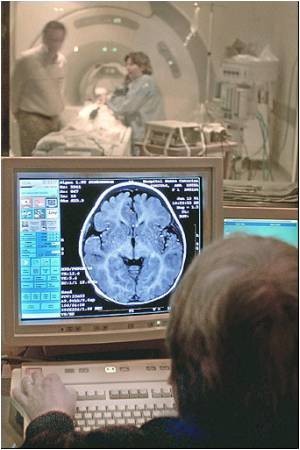A software program whose design was led by the University of Michigan Health System is proving its usefulness

The findings by U-M and Rutgers University researchers were published online in Analytical Cellular Pathology ahead of print publication.
"Being able to pick out cancer from background tissue is a key test for this type of software tool," says U-M informatics fellow Jason Hipp, M.D., Ph.D., who shares lead authorship of the paper with resident Steven Christopher Smith, M.D., Ph.D. "This is the type of validation that has to happen before digital pathology tools can be widely used in a clinical setting."
To test the software's ability to identify cancer in a digital slide, a group of human pathologists first pinpointed the cancer the old fashioned way, by hand. Their work was then used as the gold standard for grading the program's results. Researchers then systematically tested which settings within the program produced the most accurate results – which can serve as a blueprint for optimizing the software to detect other types of cancer and disease.
Diagnosing cancer and other pathologies from tissue slides has always been part science and part art. Pathologists pore over samples looking for certain structural anomalies or counting microscopic features.
But different pathologists – or even the same pathologist at different times – may come to different conclusions based on a number of factors, including whether a slide is viewed at high or low magnification, or even whether the pathologist is fatigued from examining dozens of other slides that day, the researchers say.
Advertisement
Still, the authors stress, the program isn't intended to replace the skill and art of human pathologists, but to provide an additional resource.
Advertisement
Balis led the software's design at U-M along with Hipp and former informatics fellow Jerome Cheng, M.D.
Unlike other pattern recognition software, SIVQ bases its matches on a set of concentric rings rather than the usual square block. This allows features to be identified no matter how they're rotated or whether they're flipped, as in a mirror.
An example of the program's flexibility was recently demonstrated by Bruce P. Levy, M.D., a research fellow in pathology at Harvard Medical School. Testing the program's utility in a forensic pathology setting, SIVQ was used to calculate the area of bullet wounds and to identify and quantify stippling, which are small scrapes surrounding some gunshot wounds that help to determine the distance from which a gun was fired.
"Being able to use software like SIVQ to analyze forensic images helps to bring the practice of forensic pathology closer to the high-tech fictional world of CSI," Levy says.
Since the computer-aided analysis of micropapillary urothelial carcinoma might contribute to patient care, the group is making all of their primary data freely available to other doctors and researchers at U-M's online digital imaging repository, www.WSIrepository.org.
This paper marks the researchers' 11th SIVQ-related publication, including two editorials. Several others are currently in progress.
Source-Eurekalert








